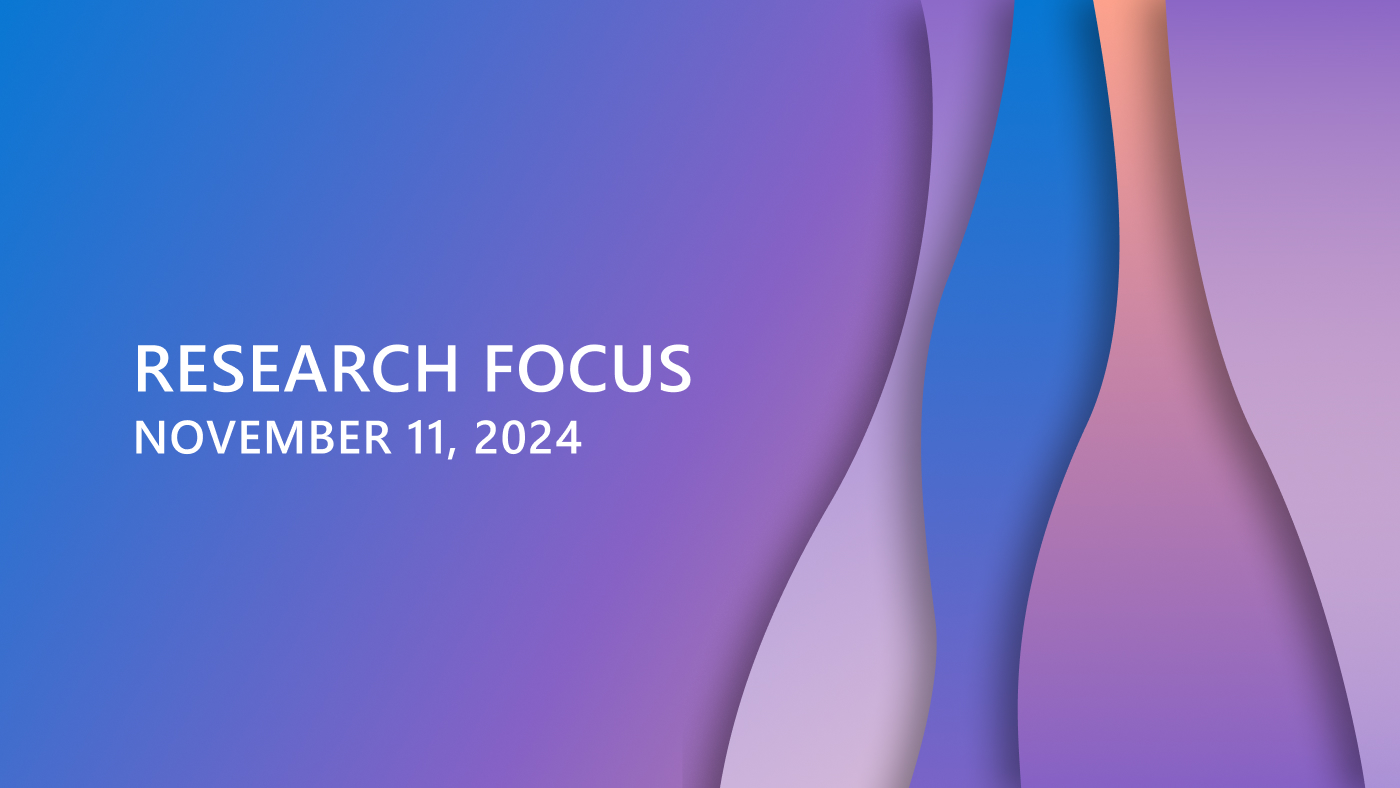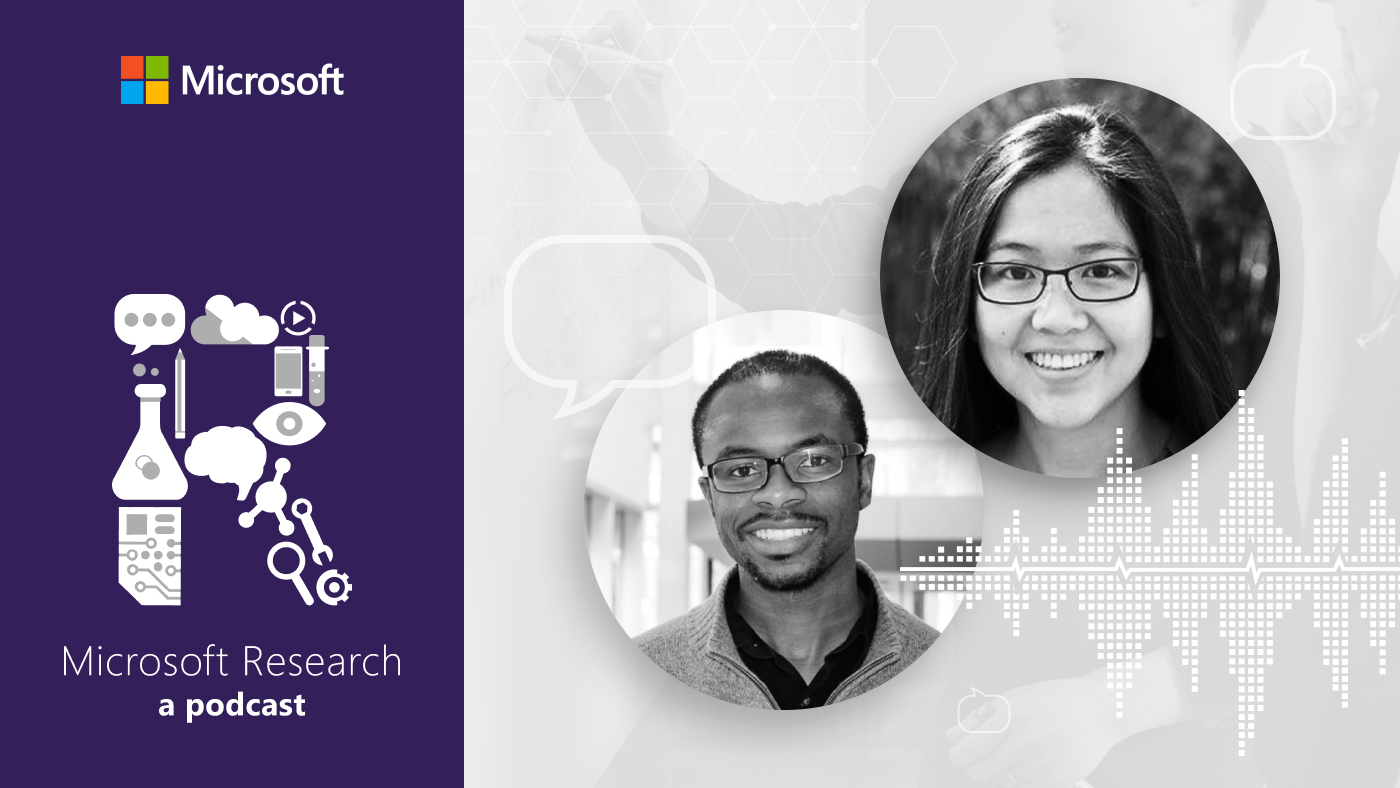2017 Swiss Joint Research Center kick off
By Scarlet Schwiderski-Grosche (opens in new tab), Senior Research Program Manager
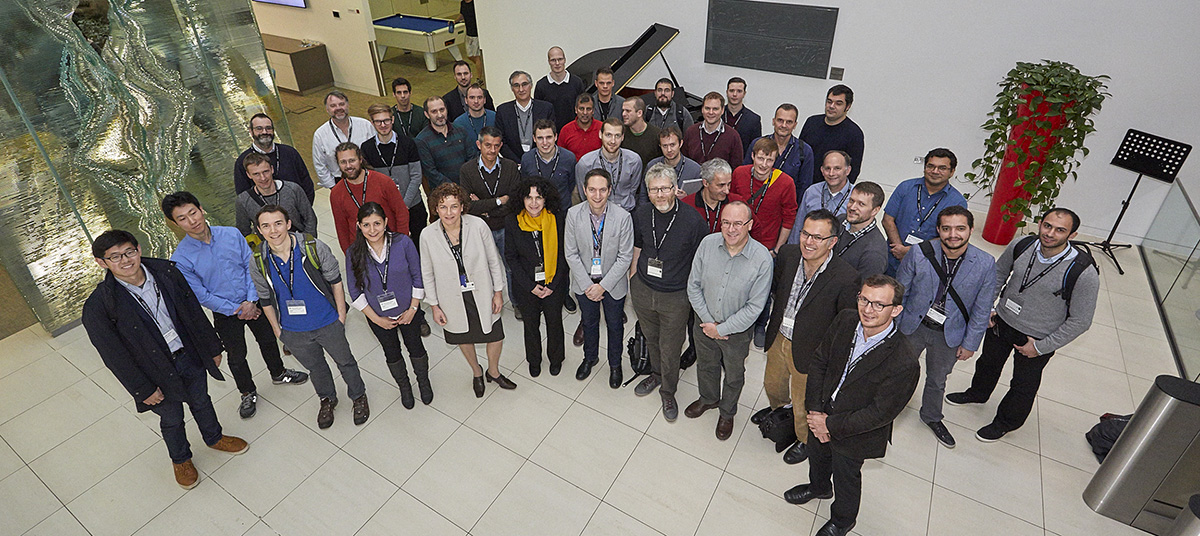
Attendees of the 2017 Swiss Joint Research Center Workshop in Cambridge, UK.
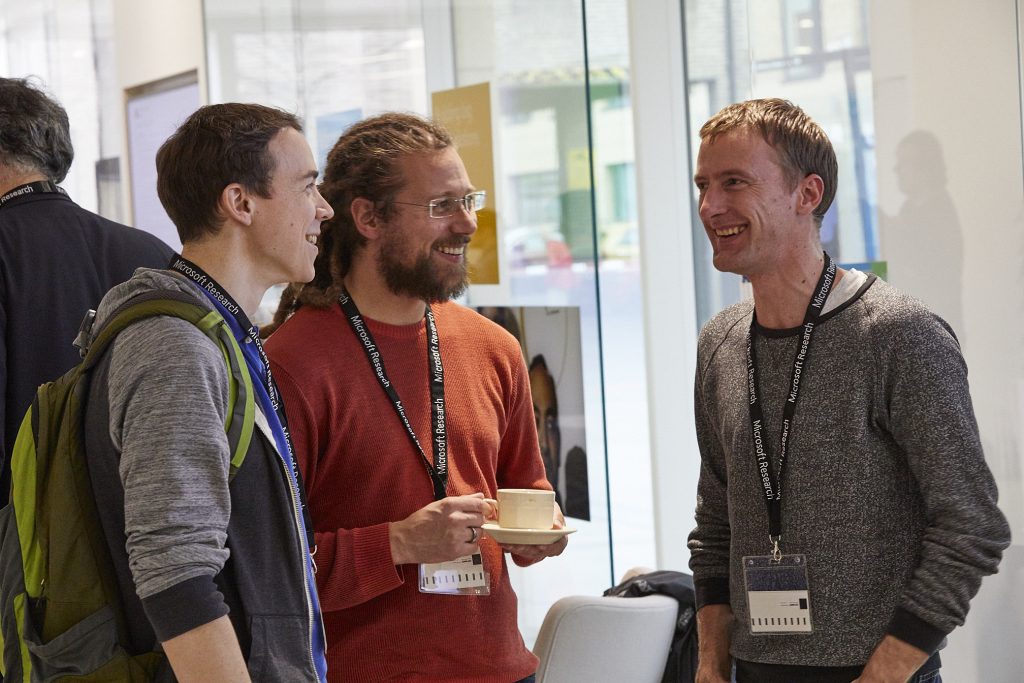
(left to right) Aurelien Lucchi and Sebastian Stich, Postdoctoral Researchers at ETH Zurich and EPFL, and Martin Jaggi, Assistant Professor at EPFL, at the workshop.
Spotlight: Event Series
Recently, we celebrated an important milestone for our Swiss Joint Research Center (Swiss JRC). We welcomed top researchers from all partners to a workshop at the Microsoft Research Cambridge Lab (opens in new tab), to kick off a new phase in our collaboration. This workshop represented the end of a busy 10-month period for the Swiss JRC during which we ramped down projects from the first phase, and conducted a Call for Proposals for the selection of projects for the second phase. At the workshop, researchers from the Swiss JRC presented their selected proposals to kick off the collaborations in the new funding cycle.
First, a little background. The Swiss JRC is a collaborative research engagement between Microsoft Research and the two universities that make up the Swiss Federal Institutes of Technology: ETH Zurich (opens in new tab) (Eidgenössische Technische Hochschule Zürich, which serves German-speaking students) and EPFL (opens in new tab)(École Polytechnique Fédérale de Lausanne, which serves French-speaking students). The Swiss JRC is a continuation of a collaborative engagement that began back in 2009, when the same three partners embarked on ICES (Innovation Cluster for Embedded Software (opens in new tab)) and was renewed for another five years in 2014. Basically, university researchers collaborate with Microsoft researchers to solve problems in computer science.
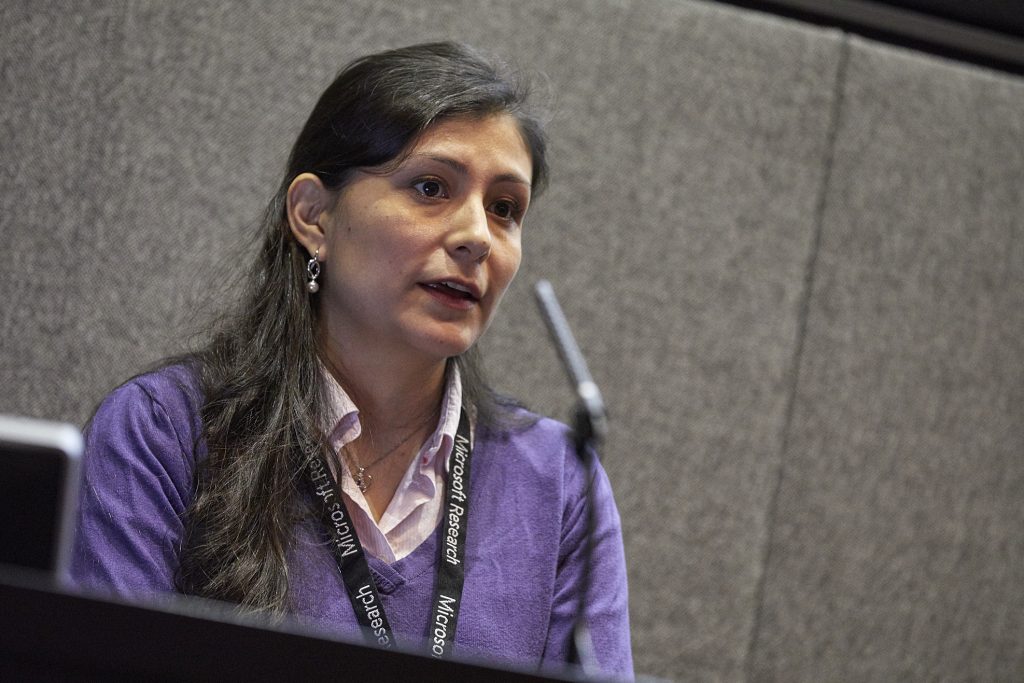
Pamela Delgado, PhD student on the EPFL project with Florin Dinu, “Towards Resources-Efficient Data Centers”
With this workshop, the Swiss JRC kicked off 10 projects, four between ETH Zurich and Microsoft and six between EPFL and Microsoft. These projects were chosen from 20 proposals assessed by the Swiss JRC steering committee for their intellectual merit, potential scientific and societal impact and evidence of strong collaborative interest between the project partners.
One compelling project uses drones that follow you around while you ski or play golf, then gives you feedback for improvement of your form—think of it as a personal trainer/GoPro/drone combo that can both figure out how to video you while you do an activity, as well as analyze your performance and make recommendations for improvements. Another drone-based project (or as we like to call them, micro-aerial vehicles, or MAVs), makes the MAV easier to control via a solution-based approach, versus movement-based controls. This project asks, “What is the goal of the MAV flight?” and solves for that, versus making the operator think about both “Where should this MAV go?” and “What should it do while it’s flying?”
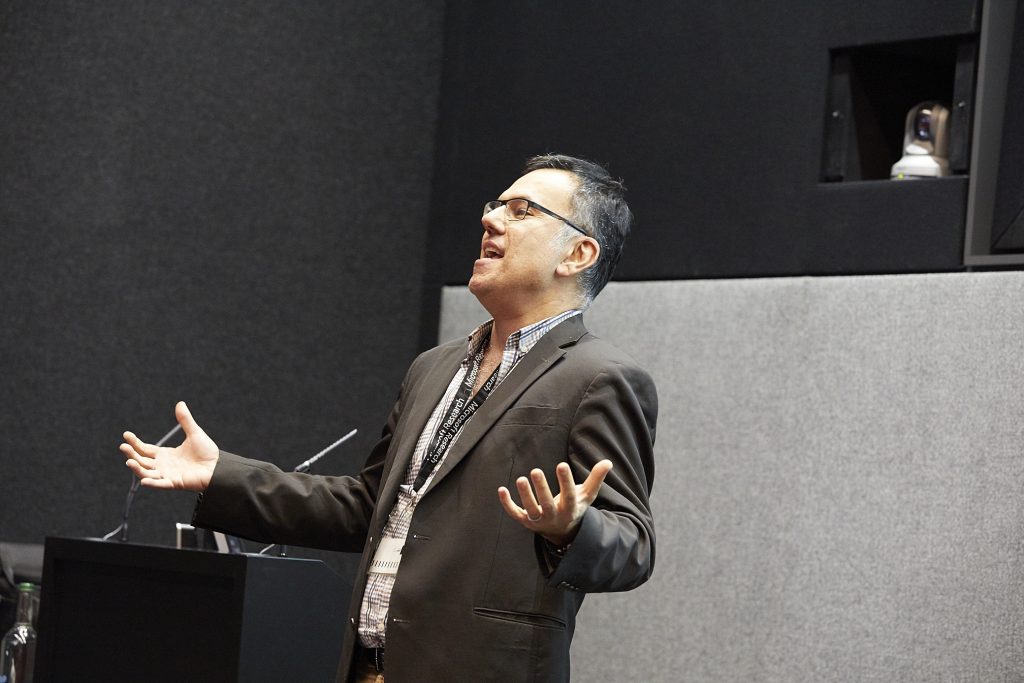
Babak Falsafi, Professor of Computer and Communication Sciences, EPFL
Other projects address new requirements in the data center, aiming at making data processing more efficient and essentially helping to reduce energy usage. One set of projects assesses data-intensive applications as are common in, for example, machine learning, graph processing, and bioinformatics. These projects explore near-memory processing, better server utilization, improved data clustering, and new approaches to transactional processing. Another set of projects leverages new hardware architectures based on, for example, FPGAs (Field Programmable Gate Arrays) and DRAM (Dynamic Random-Access Memory). Some projects address mechanisms to off-load expensive computations to achieve massive parallelism or to co-locate different stages of deep learning on the same platform. All of these projects propel the leading edge of artificial intelligence.
“Emerging silicon technologies provide an opportunity to offload data management services to near-memory accelerators for better performance. Through several Microsoft Research collaborations, including this funding round’s NeMeSys project, we are rapidly propelling the state-of-the-art in near-memory processing.” – Babak Falsafi, Professor of Computer and Communication Sciences, EPFL
Here’s the list of projects and their principal investigators:
Data Science with FPGAs in the Data Center
Gustavo Alonso, ETH Zurich
Ken Eguro, Microsoft Research, Redmond lab
Human-Centric Flight II: End-user Design of High-level Robotic Behavior
Otmar Hilliges, ETH Zurich
Marc Pollefeys, Microsoft Analog Research & Development
Tractable by Design
Thomas Hofmann and Aurelien Lucchi, ETH Zurich
Sebastian Nowozin, Microsoft Research, Cambridge lab
Enabling Practical, Efficient and Large-Scale Computation Near Data to Improve the Performance and Efficiency of Data Center and Consumer Systems
Onur Mutlu and Luca Benini, ETH Zurich
Derek Chiou, Microsoft Relevance and Intent, Research &Development
Towards Resource-Efficient Data Centers
Florin Dinu, EPFL
Christos Gkantsidis and Sergey Legtchenko, Microsoft Research, Cambridge lab
Near-Memory System Services
Babak Falsafi, EPFL
Stavros Volos, Microsoft Research, Redmond lab
Coltrain: Co-located Deep Learning Training and Inference
Babak Falsafi and Martin Jaggi, EPFL
Eric Chung, Microsoft Research, Redmond lab
From Companion Drones to Personal Trainers
Pascal Fua and Mathieu Salzmann, EPFL
Debadeepta Dey, Ashish Kapoor, and Sudipta Sinha, Microsoft Research, Redmond lab
Revisiting Transactional Computing on Modern Hardware
Rachid Guerraoui and Georgios Chatzopoulos, EPFL
Aleksandar Dragojevic, Microsoft Research, Cambridge lab
Fast and Accurate Algorithms for Clustering
Michael Kapralov and Ola Svensson, EPFL
Yuval Peres, Nikhil Devanur and Sebastien Bubeck, Microsoft Research, Redmond lab
Related:


